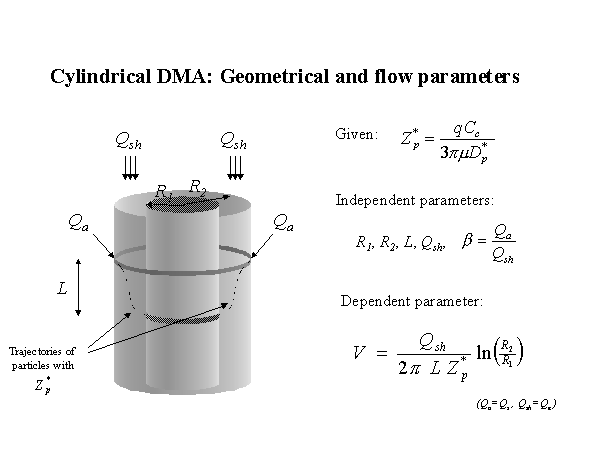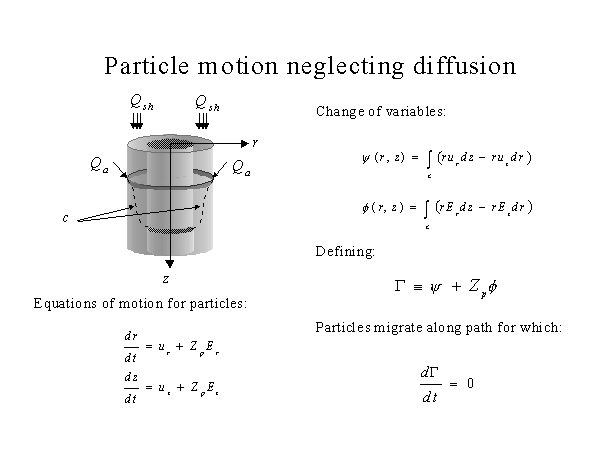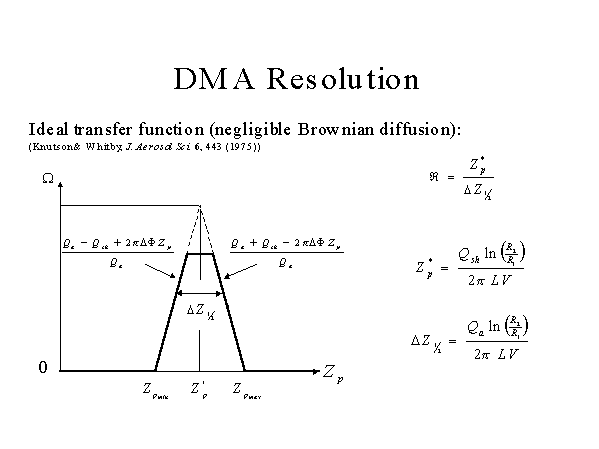Low
pressure Differential Mobility Analysis
We
use Differential Mobility Analysis in the monitoring and processing of
nanoparticles.
In
the geometry of a cylindrical capacitor, particles with mobility Zp*
migrate toward a sampling port following a centroid trajectory determined
by the applied electric field and the gas flows.

Neglecting
diffusion, the particle motion is given by:

The
performance of a Differential Mobility Analyzer is thus determined by the
so-called transfer function of the instrument, i.e., the probability that a
particle with a certain mobility will be classified by the device.

When
diffusion is included the transfer function broadens as the classified
particles become smaller.
Our
focus is on the design and implementation of new Differential Mobility
Analyzers to meet the challenges of nanoparticle research. One of our
approaches is the development of instruments for operation under low-pressure
conditions.
Main
advantages of low-pressure operation:
![]() Shorter
residence times boost particle transmission in the nanometer regime.
Shorter
residence times boost particle transmission in the nanometer regime.
![]() Less
contamination by gas impurities.
Less
contamination by gas impurities.
![]() Compatibility
with low-pressure processing and monitoring.
Compatibility
with low-pressure processing and monitoring.
![]()